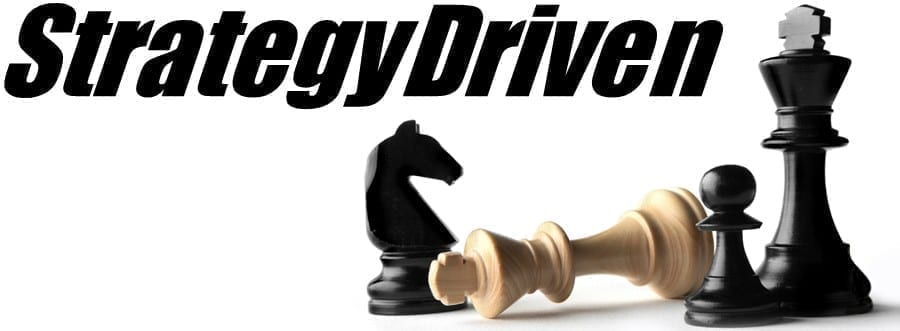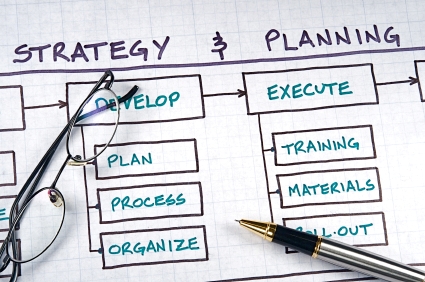The Nine Building Blocks of Innovating New Strategic Alternatives
When organizations consider stepping outside of their traditional boundaries to engage with other players in new types of business innovations, they are often a bit lost in how to go about developing such a strategy process. And indeed, multi-stakeholder collaborations often don’t have the luxury of a traditional leader, as there is no formal hierarchy or power structure. They frequently emerge from a conversation between different players and may have an informal initiator who does not hold a formal position of power. When different participants of different organizations participate in a co-creation event, it is indeed supposed to be a meeting of equals.
However, without that leadership function, it can get confusing who is in charge of what and who makes what decisions. Clarity about ownership and process help in such situations that are unusual for most participants who come from hierarchical structures or have grown up in them before. In our experience, it is helpful to have a facilitator present when holding such sessions in order to ensure that decision-making clarity is present. Such a facilitator allows the initiator to participate with his perspective like any other member of the group.
Not every such strategy process looks the same and it is useful to differentiate between nine basic building blocks of co-creation. These can be grouped into five phases: getting started, gaining momentum, the small innovation cycle, scaling out, and rounding off. With exception of the last phase, each phase consists of two building blocks, see Figure 1.
The book “Five Superpowers for Co-creators” outlines the nine building blocks of co-creation in the context of what it takes to successfully work with external stakeholders to develop new business models and strategies (www.5superpowers.org). The book also looks at the challenges at the individual, group and facilitation levels and suggests practical pathways to progress when the process get stuck.

Figure 1: The nine building blocks of co-creation
A successful multi-stakeholder process consists of a number of building blocks. These cover three specific activities: those of the initiator of the project, those related to co-creation event and those related to scaling and engagement activities. Each of these can be divided into three building blocks for a total of nine.
The facilitator is mostly involved in the co-creation events and may help the initiator in the activities specific to his role. There is a small innovation cycle consisting of a repetition of co-creation events and prototyping. Combining all nine building blocks is define as the large innovation cycle.
A typical co-creation event consists of a multitude of stakeholder engagement and interaction exercises and workshops designed to balance listening, sharing, visioning, brainstorming, ideation and early prototyping.
A more detailed overview of the objectives of each building block is provided in Figure 2. The building blocks serve as a way to render the process transparent and clear in terms of what needs to happen along the co-creation journey. Clearly, there is no need to use all nine steps. We have indeed provided a pragmatic short-cut of these building blocks as a concise business strategy tool we call SDGXCHANGE (www.SDGX.org) which use only the most essential elements required for business to innovative new strategic alternatives.

Figure 2: The objectives of each of the nine building blocks
The article builds on extracts of the Book “Five Superpowers for Co-creators”
About the Author
 Dr. Katrin Muff (www.KatrinMuff.com) is a thought leader in the transformative space of sustainability and responsibility. She is Director at the Institute for Business Sustainability and holds a position as Professor of Practice at the LUISS Business School. She works with leaders, their teams and their boards in the area business transformation towards sustainability. She co-developed the Competency Assessment for Responsible Leadership (). Most recently, Katrin published Five Superpowers for Co-creators (www.5superpowers.org), which features the nine building blocks of co-creation including a pragmatic solution for business organization with the applied strategy tool SDGXCHANGE (www.SDGx.org).
Dr. Katrin Muff (www.KatrinMuff.com) is a thought leader in the transformative space of sustainability and responsibility. She is Director at the Institute for Business Sustainability and holds a position as Professor of Practice at the LUISS Business School. She works with leaders, their teams and their boards in the area business transformation towards sustainability. She co-developed the Competency Assessment for Responsible Leadership (). Most recently, Katrin published Five Superpowers for Co-creators (www.5superpowers.org), which features the nine building blocks of co-creation including a pragmatic solution for business organization with the applied strategy tool SDGXCHANGE (www.SDGx.org).

 It’s hard to find an executive who doesn’t believe that his or her people are significant assets and a competitive advantage for the company. Why then are so few employees involved in the strategic planning process? Engaging employees gains their ‘rubber meets the road’ customer and process experiences and earns buy-in it for the plan’s implementation. Therefore, employee involvement in strategic planning is a win-win proposition; the only question remaining is when and where in the process to involve them.
It’s hard to find an executive who doesn’t believe that his or her people are significant assets and a competitive advantage for the company. Why then are so few employees involved in the strategic planning process? Engaging employees gains their ‘rubber meets the road’ customer and process experiences and earns buy-in it for the plan’s implementation. Therefore, employee involvement in strategic planning is a win-win proposition; the only question remaining is when and where in the process to involve them. StrategyDriven Enterprises, LLC
StrategyDriven Enterprises, LLC Sharon Drew Morgen is founder of Morgen Facilitations, Inc. (
Sharon Drew Morgen is founder of Morgen Facilitations, Inc. ( All business leaders are human and some get overly enamored with and excited about a particular business opportunity. These business leaders then direct either a business case or project plan to be developed which is immediately funded; circumventing the organization’s business planning process. In these cases, the initiative’s ability to meet the organization’s business objectives and goals remains uncertain and consideration of competing opportunities is forfeit. In some organizations, entire portfolios are determined in this fashion; leaving leaders blind with respect to their ability to optimally achieve the organization’s mission goals.
All business leaders are human and some get overly enamored with and excited about a particular business opportunity. These business leaders then direct either a business case or project plan to be developed which is immediately funded; circumventing the organization’s business planning process. In these cases, the initiative’s ability to meet the organization’s business objectives and goals remains uncertain and consideration of competing opportunities is forfeit. In some organizations, entire portfolios are determined in this fashion; leaving leaders blind with respect to their ability to optimally achieve the organization’s mission goals.